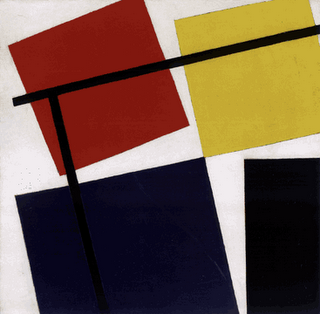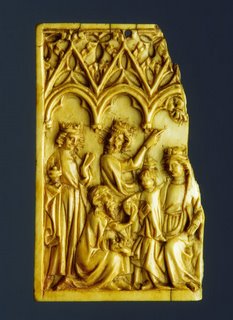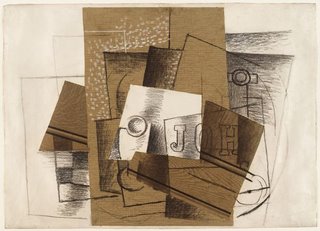This angers me so much. I couldn't even read the complete article. Having worked in schools/art centers where the other staff is more "conservative" I know that this is a real issue. It is sad to think that an art teacher is out of a job for teaching what she feels so passionately about and what is history.
Please leave a comment.
Museum Field Trip Deemed Too Revealing
Michael Stravato for The New York Times
Sydney McGee, a teacher in Frisco, Tex., led fifth graders through European and contemporary galleries of the Dallas Museum of Art last April.
By RALPH BLUMENTHAL
Published: September 30, 2006
FRISCO, Tex., Sept. 28 — “Keep the ‘Art’ in ‘Smart’ and ‘Heart,’ ” Sydney McGee had posted on her Web site at Wilma Fisher Elementary School in this moneyed boomtown that is gobbling up the farm fields north of Dallas.
But Ms. McGee, 51, a popular art teacher with 28 years in the classroom, is out of a job after leading her fifth-grade classes last April through the Dallas Museum of Art. One of her students saw nude art in the museum, and after the child’s parent complained, the teacher was suspended.
Although the tour had been approved by the principal, and the 89 students were accompanied by 4 other teachers, at least 12 parents and a museum docent, Ms. McGee said, she was called to the principal the next day and “bashed.”
She later received a memorandum in which the principal, Nancy Lawson, wrote: “During a study trip that you planned for fifth graders, students were exposed to nude statues and other nude art representations.” It cited additional complaints, which Ms. McGee has challenged.
The school board suspended her with pay on Sept. 22.
In a newsletter e-mailed to parents this week, the principal and Rick Reedy, superintendent of the Frisco Independent School District, said that Ms. McGee had been denied transfer to another school in the district, that her annual contract would not be renewed and that a replacement had been interviewed.
The episode has dumbfounded and exasperated many in and out of this mushrooming exurb, where nearly two dozen new schools have been built in the last decade and computers outnumber students three to one.
A representative of the Texas State Teachers Association, which has sprung to Ms. McGee’s defense, calls it “the first ‘nudity-in-a-museum case’ we have seen.”
“Teachers get in trouble for a variety of reasons,” said the association’s general counsel, Kevin Lungwitz, “but I’ve never heard of a teacher getting in trouble for taking her kiddoes on an approved trip to an art museum.”
John R. Lane, director of the museum, said he had no information on why Ms. McGee had been disciplined.
“I think you can walk into the Dallas Museum of Art and see nothing that would cause concern,” Mr. Lane said.
Over the past decade, more than half a million students, including about a thousand from other Frisco schools, have toured the museum’s collection of 26,000 works spanning 5,000 years, he said, “without a single complaint.” One school recently did cancel a scheduled visit, he said. He did not have its name.
The uproar has swamped Frisco school switchboards and prompted some Dallas-area television stations to broadcast images of statues from the museum with areas of the anatomy blacked out.
Ms. Lawson and Mr. Reedy did not return calls. A spokeswoman for the school district referred questions to the school board’s lawyer, Randy Gibbs. Mr. Gibbs said, “there was a parent who complained, relating the complaint of a child,” but he said he did not know details.
In the May 18 memorandum to Ms. McGee, Ms. Lawson faulted her for not displaying enough student art and for “wearing flip-flops” to work; Ms. McGee said she was wearing Via Spiga brand sandals. In citing the students’ exposure to nude art, Ms. Lawson also said “time was not used wisely for learning during the trip,” adding that parents and teachers had complained and that Ms. McGee should have toured the route by herself first. But Ms. McGee said she did exactly that.
In the latest of several statements, the district contended that the trip had been poorly planned. But Mr. Gibbs, the district’s lawyer, acknowledged that Ms. Lawson had approved it.
“This is not about a field trip to a museum,” the principal and superintendent told parents in their e-mail message Wednesday, citing “performance concerns” and other criticisms of Ms. McGee’s work, which she disputes. “The timing of circumstances has allowed the teacher to wave that banner and it has played well in the media,” they wrote.
They took issue with Ms. McGee’s planning of the outing. “No teacher’s job status, however, would be jeopardized based on students’ incidental viewing of nude art,” they wrote.
Ms. McGee and her lawyer, Rogge Dunn, who are exploring legal action, say that her past job evaluations had been consistently superior until the museum trip and only turned negative afterward. They have copies of evaluations that bear out the assertion.
Retracing her route this week through the museum’s European and contemporary galleries, Ms. McGee passed the marble torso of a Greek youth from a funerary relief, circa 330 B.C.; its label reads, “his nude body has the radiant purity of an athlete in his prime.” She passed sculptor Auguste Rodin’s tormented “Shade;” Aristide Maillol’s “Flora,” with her clingy sheer garment; and Jean Arp’s “Star in a Dream.”
None, Ms. McGee said, seemed offensive.
“This is very painful and getting more so,” she said, her eyes moistening. “I’m so into art. I look at it for its value, what each civilization has left behind.”
School officials have not named the child who complained or any particular artwork at issue, although Ms. McGee said her puzzlement was compounded when Ms. Lawson referred at times to “an abstract nude sculpture.”
Ms. McGee, a fifth-generation Texan who has a grown daughter, won a monthly teacher award in 2004 from a local newspaper. She said the loss of her $57,600-a-year job could jeopardize her mortgage and compound her health problems, including a heart ailment.
Some parents have come to Ms. McGee’s defense. Joan Grande said her 11-year-old daughter, Olivia, attended the museum tour.
“She enjoyed the day very much,” Ms. Grande said. “She did mention some nude art but she didn’t make a big deal of it and neither did I.” She said that if Ms. McGee’s job ratings were high before the incident, “something isn’t right” about the suspension.
Another parent, Maijken Kozcara, said Ms. McGee had taught her children effectively.
“I thought she was the greatest,” Ms. Kozcara said. But “knowing Texas, the way things work here” she said of the teacher’s suspension, “I wasn’t really amazed. I was like, ‘Yeah, right.’ ”
Next Article in Education (2 of 10) »


